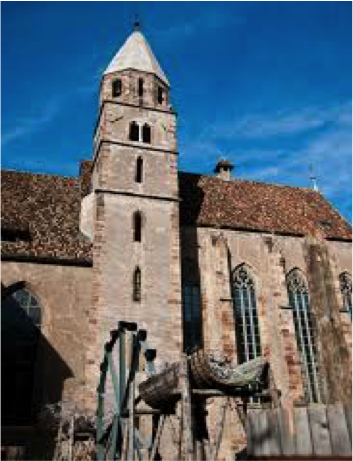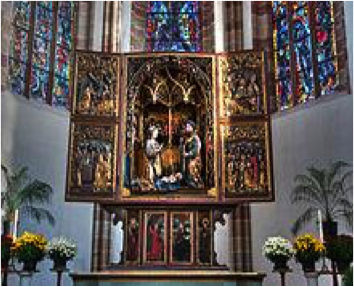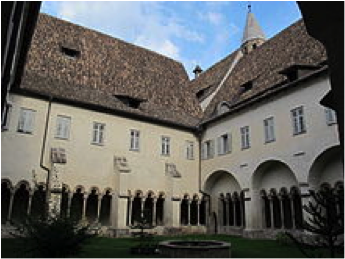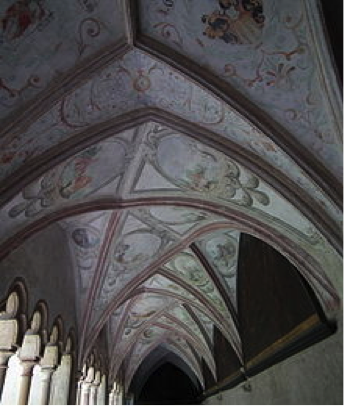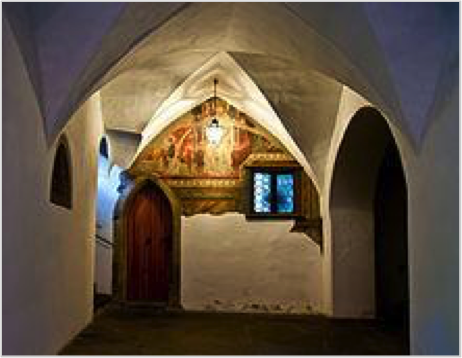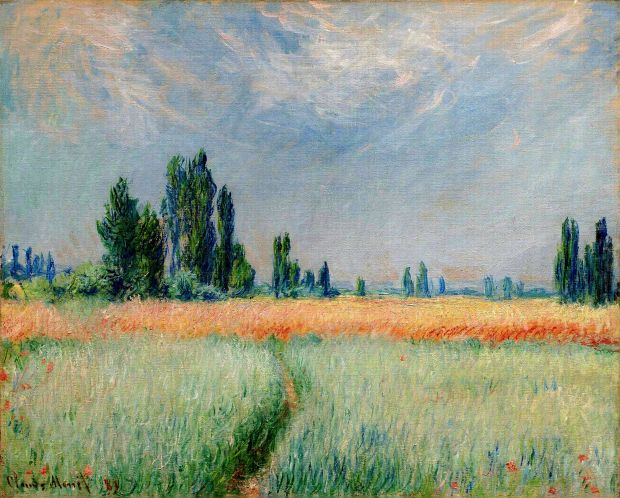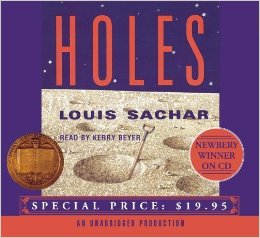
Chapter 1
Camp Green Lake is not a lake anymore: over hundred years ago the lake dried up and the people of the little town next to the lake moved away. They left that place not only because there was no lake anymore, but also because the temperature was usually about ninety degrees. In the holes dug by the campers we can find rattlesnakes and scorpions, but the most dangerous animal at the camp are yellow-spotted lizards. If someone is bitten by one of those, there is nothing you can do anymore to survive.
Chapter 2
Now Camp Green Lake is a camp for bad boys that had committed a crime, instead of going to jail. They have to dig a hole every day under the hot sun to get more educated and to become good boys. Stanley Yelnats was given a choice. He could choice between jail or Camp Green Lake. He chose the camp because he had never been to a camp before, because his family was poor.
Chapter 3
Stanley rode to Camp Green Lake on a bus, being the only passenger. He thought he was going to go to one of the camps where the rich children go and hoped he would find some friends. Stanley had been arrested for a crime he did not commit. Stanley and his family always seem to be at the wrong place at the wrong time and they blame their bad luck on Stanley’s no-good-dirty-rotten- pig-stealing-great-great-grandfather. This great-great-grandfather had stolen a pig from a Gypsy who put a curse on the great- great-grandfather and his descendants. Although they do not believe in curses, but they think they are very unlucky. Stanley’s father is an inventor, but because he never has any luck his inventions never work. The first Stanley Yelnats, the protagonist’s great grandfather, was robbed by Kissin’ Kate Barlow. If Stanley’s great grandfather had not been robbed, Stanley might be living in a mansion in California instead of in a Texas apartment that smelles of burning rubber and foot odor caused by Stanley’s father’s attempts to invent a way to recycle old sneakers. Stanley thinks it is cool that his great-grandfather was robbed by an outlaw. Kate Barlow only kissed the men she killed so she did not actually kiss Stanley’s great-grandfather because she did not kill him. Stanley arrived at Camp Green Lake, after a ride of about nine hours.
Chapter 4
The only things he saw when he left the bus were a few tents, a few buildings, and two trees by a cabin. The only plants were two trees, there were not even weeds. Stanley went into one of the buildings where he met Mr. Sir inside. Mr. Sir was eating sunflower seeds and said that they are his substitute for smoking. Mr. Sir introduced himself and commanded Stanley to always call him Mr. Sir when he talked to him. Then he tells Stanley, “You’re not in the Girl Scouts anymore.” Mr. Sir give Stanley two sets of orange jumpsuits, orange T-shirts, yellow socks, and one towel. Mr. Sir then told Stanley that one set of clothing was for working and the other was for his free time. He had to dig one hole every day, even on weekends. Every hole had to be five feet deep and five feet across. His shovel was five feet long and was to be used as a measuring stick. Breakfast was at 4:30am so that the boys could work before the sun was out and the day got hotter.
Chapter 5
There were six tents labeled A through F. The counselors slept in tent F and the campers, or juvenile delinquents, slept in the other tents. Stanley was assigned to tent D with Mr. Pendanski as his counselor. Mr. Pendanski was very friendly and showed Stanley everything. Pendanski introduced Stanley to the other campers. The campers all had real names and nicknames. Mr. Pendanski introduced Rex and Alan but their nicknames were X-Ray and Squid. X-Ray wore glasses and asked where Barf Bag was. Mr. Pendanski, who called the campers by their birth names, said that Lewis was in a hospital and would not be returning. Mr. Pendanski introduces José, Theodore, and Ricky as well. They are also known as Magnet, Armpit, and Zigzag. Zero is the last boy that Stanley meets. The boys called the counselor “mom”.
Chapter 6
Because there was no hot water Stanley had to have a cold shower. He ate a disgusting dinner, and one of the campers asked him for what reason he was at the camp. Stanley told him that he had stolen a pair of sneakers from the famous baseball player Clyde “Sweet Feet” Livingston. He didn’t tell them he was innocent. He knew nobody would believe him. When Stanley went back to his smelly cot he thought on the crime he didn’t commit. The day Stanley was arrested he had to walk home because he had missed the bus. While he was walking, a pair of shoes had fallen from a freeway overpass, and hit him on the head. Since his father was doing experiments with shoes, especially sneakers, Stanley ran home to bring them to his father. The shoes had smelled very bad. Because he was running, a police car pulled him over and took the shoes. Stanley later found out that the shoes belonged to Clyde Livingston and had been donated to a homeless shelter to raise money. Stanley was convicted of stealing the shoes and sent to Camp Green Lake.
Chapter 7
The next day Stanley had to dig his first hole and it was very hard for him. His hands hurt very much, but Mr. Pendanski told him this was good to build character. Stanley’s great-great-grandfather was from Latvia and his name was Elya Yelnats. When he was fifteen he fell in love with a fourteen year old girl: Myra Menke. Elya wanted to marry her but so did Igor Barkov, a fifty-seven year old pig farmer. Elya couldn’t offer Myra’s father a such big pig like Igor could so he visited Madame Zeroni, an old Egyptian woman with only one foot. She told Elya to go to America and to forget Myra, because she was a pretty but quite stupid girl. However, Elya couldn’t stop thinking about her. So Madame Zeroni gave him a little pig and told him to carry it up the mountain every day and to let it drink from the stream with water that runs uphill. So the pig would grow from day to day and it would be bigger than Igor’s one. She also made Elya promise that after he showd the pig to Myra’s father he had to carry her, Madame Zeroni, up the mountain and sing to her. If he didn’t, then she said she will put a curse on his family. But on the day that he brang the pig to Myra’s house he realized that Myra is very stupid and that she didn’t even care who she married. Disillusioned, Elya got on a boat bound for America, forgetting his promise to Madame Zeroni. In America he learnd English and married a woman who was strong and smart. Elya and his wife had a son who they named Stanley Yelnats because they liked that Stanley is Yelnats spelled backwards. Even though they all worked so hard, they had a lot of bad luck in their lives and Elya began to believe that Madame Zeroni had cursed him.
Chapter 8
The dangerous yellow-spotted lizard have eleven yellow spots, which are hard to see on their yellow-green body. They have black very teeth, and white tongues. They live in holes, which offer them shade. They eat small animals, insects, cactus thorns and sunflower seeds.
Chapter 9
After digging his first hole, Stanley returned to the camp. Stanley bumped into a large boy who trieed to pick a fight with him. Stanley tried to avoid the fight and X-Ray and Armpit came to his rescue saying, “You don’t want to mess with the Caveman.” Stanley, Armpit, Squid, and X-Ray talked about the trouble of digging holes. Stanley has brought his box of paper to the wreck room because he wanted to write a letter to his mother. In the letter he told her he was having a good time. In the middle of writing his letter Stanley noticed that Zero was staring at his letter. Zero asked him, “Did the shoes have red X’s on the back?” Stanley responded that they did and then the two heard Armpit and Squid calling Caveman to come to dinner. Stanley realizes that his nickname was Caveman.
Chapter 10
Stanley’s second hole was even harder to dig than the first one. His whole body hurt and he was so tired because he hadn’t any sleep. While he was digging he found a fish fossil. Mr. Pendanski once told him that if he would find anything interesting he might not have to finish his hole, if the Warden likes the thing he found. When the water truck came Stanley noticed that there was always an order to the line, and he was the last one. Stanley showed the fish fossil to Mr. Pendanski but he said that the fossil was not what the Warden wanted. Stanley had to finish digging his hole.
Chapter 11
X-Ray told Stanley to give him anything else interesting that he found in his hole. X- Ray explained him that his nickname was pig latin for his real name, Rex. Stanley agreed because he wanted X-Ray to like him. Stanley wonders why everyone follows what X-Ray does. He realized that X-Ray was the smallest boy apart from Zero and that he, Stanley, was actually the largest boy.
Chapter 12
After, when Stanley finished digging his second hole he returned to camp, Mr. Pendanski talked with him and the rest of his group. Mr. Pendanski asked each boy what he wanted to do as a career, after leaving Camp Green Lake. Zero was silent at first but then he replied that he likes digging holes.
Chapter 13
In the next days, Stanley found a small gold tube with a heart engraved on it. Inside the heart are engraved the initials KB. He has told X-Ray that he would give him anything he found so that X-Ray could have the day off. Reluctantly, Stanley gave X-Ray the tube. Because it was almost the end of the day, Stanley suggested that X-Ray kept the tube until the next day so that if the Warden liked what he had found he could get the whole day off instead of just an hour. X-Ray agreed that this was a very good plan and X-Ray told Stanley to move up one place in line of the water, ahead of Zero.
Chapter 14
The next day X-Ray went to Mr. Pendanski and showed him the gold tube. Mr. Pendanski went to inform the Warden about X-Ray’s find. The Warden was a tall woman with red hair. She gave X-Ray the day off and ordered Mr. Pendanski to fill the canteens for the boys again.
Chapter 15
The warden ordered Zero to dig X-Ray’s hole and Stanley to sift through the dirt that Zero dug. She put two boys on every hole, one to dig and the other to sift. All of the boys were promised a double shower and the day off if they would find anything. Stanley wonders how the Warden knew he was called Caveman, then Zigzag told him that the Warden had installed small hidden cameras and microphones in the whole camp. Stanley realized that the Warden wanted the boys to dig in order to find something. He made a mental note of the location of the hole where he found the gold tube in.
Chapter 16
The next day the Warden followed the boys to their holes. As Stanley sifted through dirt he tries to think of what the gold tube might have been. After digging the boys returned to the Wreck room where Mr. Pendanski gave Stanley a letter. After the boys left for dinner Stanley reads the letter from his mother. She told him that she is proud of him and that their landlord was threatening to evict them because his father’s experiments with shoes made the whole apartment smell awful. Stanley saw Zero behind him and he was surprised because he thought everyone had left. He told Zero what his mother had written.
Chapter 17
The next day the boys continued to dig in the spot that the Warden believed contained the gold tube, but nobody except Stanley and X-Ray knew that that was the wrong hole. The Warden got inpatient and told Mr. Pendanski that he was giving the boys too much water. As they continued to dig Zigzag knocked Stanley in the head with a shovel, cutting a gash near his ear. Mr. Sir made him a bandage out of a sack of sunflower seeds and told him to get back to work.
Chapter 18
Later, the boys began to dig in another section of the dried up lake. Stanley had become stronger now and finished his holes faster, even before many other boys did. He returns to the camp and wrote a letter to his mother in his tent so that the other boys wouldn’t see him. Again, Zero looked over his shoulder. Zero reveals that he didn’t know how to read or write and asked Stanley to teach him.
Chapter 19
One night Stanley heard Squid crying, so the next morning Stanley asked Squid if he was okay and Squid reacts angry. Stanley didn’t talk to the other boys very much because he was afraid of making them angry. One day after Mr. Sir fills their canteens, Magnet stole his bag full of sunflower seeds. When Magnet threw the bag to Stanley, all of the seeds dropped into Stanley’s hole and spill. Mr. Sir returned to the lake and catches Stanley with the bag of seeds. Now Stanley was again in the wrong place at the wrong time. Mr. Sir asked Stanley who stole them and Stanley took the blame instead of Magnet. Then Mr. Sir took Stanley to the Warden.
Chapter 20
Mr. Sir explained that someone stole the sunflower seeds, but he didn’t think it was Stanley. The Warden asked Stanley to bring a makeup case over to her. In the case there was a lipstick case and a bottle of red nail polish. The Warden explained that the nail polish had rattlesnake venom in it. The polish is harmless when dry but toxic while wet. Stanley was afraid, but the Warden then painted the nails on her hands and slapped Mr. Sir across the face. Her wet nail polish made him shout aloud because of the pain. The Warden told Stanley, “He’s not going to die…Unfortunately for you.”
Chapter 21
The boy went back to his hole and thought of how his great-grandfather had felt after being robbed by Kissin’ Kate Barlow and then stranded in the desert. By the time Stanley’s great-grandfather was rescued he was insane. He claimed that he had “found refuge on God’s thumb.” He married a nurse from the hospital after he recovered but he never knew what he meant by “God’s thumb”. When Stanley arrived to his hole he found that Zero had dug it for him.
Chapter 22
When he was back in the tent, Stanley thanked Zero for digging his hole. Then he asked why he helped him, and Zero said that Stanley didn’t steal the sunflower seeds and he also said “You didn’t steal the sneakers.” After this, Stanley offered to teach Zero to read and they made a deal in which Zero would dig Stanley’s hole for an hour every day so that Stanley wouldn’t be as tired when he taught Zero in the evening. He began to teach Zero the alphabet and discovered that Zero wasn’t as stupid as the other boys and Mr. Pendanski thought. At night Stanley worried what X-Ray would have said when Zero dug for Stanley. Then he thought of the gold tube he found and realized it is like something he had seen in the Warden’s bathroom; it was half a lipstick container. He wondered if the initials KB could stand for Kate Barlow.
Chapter 23
Now Green Lake is described as it was one hundred and ten years ago: a beautiful lake of clear water. Miss Katherine Barlow was the teacher of the one room schoolhouse of the town and she made wonderful spiced peaches that were preserved to last a year or longer. Charles Walker, who was also called Trout, came to classes that Miss Katherine taught. Trout did not come to learn, he was from the richest family in town and he wanted to marry Miss Katherine. One day he asked Miss Katherine to go on a ride with him in his new motorized boat. Trout is used to getting his own way so he is shocked and angry when Miss Katherine refuses to go with him.
Chapter 24
Mr Sir’s face was very swollen from the Warden’s rattlesnake venom and he jells at a boy who comments at his face. The next day Stanley didn’t get any water while digging the holes.
Chapter 25
We return to the time were Green Lake was still a lake. Sam, the onion man, sold onions and remedies from town. The name of his donkey is Mary Lou who pulls his cart of onions. He rowed across the lake with his boat to arrive to his secret onion field where the water runs uphill. He meant that onions are much better than medicine. The people of the town don’t, but if neither medicine helps hey ask Sam for help. One day Miss Katherine asks Sam to fix the hole in the schoolhouse roof. If he would help her she would give him some of her spiced peaches. So he did and the two became good friends. Sam couldn’t visit school because he was black. The two met more often because they liked their conversations and Miss Katherine continues to find things for Sam to fix in the schoolhouse. When there was nothing left to fix she told Sam her heart was broken and he kissed her. Someone of the town, Hattie Parker, saw them and pointed at them whispering -God will punish you-.
Chapter 26
Still hundred years ago, the news speeded that the two kissed. At this time it was against the law for black man to kiss a white woman. The angry town came to the schoolhouse to attack Miss Katherine and her books. She ran to the sheriff for help but he was drunk and preparing to hang Sam. Miss Katherine ran to Sam and both climb into his boat. Sam was rowing very hard but Trout Walker’s motorized boat was faster. Walker crashes into them and Sa was shot and killed. After that day, not one drop of rain has ever fallen on Green Lake. Three days after Sam’s death Katherine Barlow killed the Sheriff and then applied lipstick before kissing his dead face. Then Katherine Barlow spent twenty years as a dangerous outlaw in the West, known as Kissin’ Kate Barlow.
Chapter 27
Stanely had to pay attention to his water because Mr. Sir didn’t fill Stanley’s canteen anymore. When Zero spent an hour digging Stanley’s hole the other boys mocked Stanley for having a slave. X-Ray says, ” Same old story…the while boy sits while the black boy does all the work.” Stanley continued to teach Zero, who was a fast learner. One day Zero wrote his name and told Stanley that his real name was Hector Zeroni.
Chapter 28
Kate Barlow was an outlaw for over twenty years, then she returned to Green Lake. There were two oak trees near a cabin, where she lived. After three years there, Trout Walker and his wife, the redhead Lind Miller, tied Kate up while she was sleeping. Trout had lost all his money and asked Kate where she had hidden her outlaw loot. Trout and Linda made Kate walk barefoot across the hot sand until she dies from the bite of a yellow-spotted lizard. Kate never told them where the money was hidden.
Chapter 29
At the camp it was very hot as usually. One day Stanley saw dark clouds near the mountains in the west. He heard thunder and lightning but no rain. During a flash of lightning Stanley thought one of the mountains looked like a giant fist with a thumb sticking up. He thought of how his stranded great- grandfather said he had found refuge on God’s thumb.
Chapter 30
Stanley thought about God’s thumb and wonders if Kate Barlow lived in this area and if it was actually her gold lipstick tube that he found. When Mr. Pendanski brang their bag lunches the other boys taunted Stanley about having Zero dig Stanley’s hole for him. Zigzag pushes Stanley and they started fight. The Warden came and most of the boys told her that Zero had been digging some of Stanley’s hole. Stanley explained that he was teaching Zero to read. The Warden forbade Stanley to teach Zero to read and Mr. Pendanski taunted Zero about how stupid he was. Zero got angry and said that he would not dig any more holes. When Mr. Pendanski tells him that digging holes was all he would ever be good for, Zero smashed his shovel across Mr. Pendanski’s face and ran away. The Warden told the other counselors not to care about Zero because he would have to return for water. Then she said that the other six boys still had to dig seven holes, also without Zero.
Chapter 31
Also Stanley was angry with everyone including himself. He wanted to help Zero. He hoped Zero would travel to the mountain that looks like a thumb.
Chapter 32
After a few days Zero still didn’t come back and so his cot was given to another new boy called Brian. Stanley worried about Zero and so he decided to steal the water track of Mr. Sir. He didn’t know how to drive it but he races away in few seconds. Soon he drove into a hole. He got out and ran away.
Chapter 33
No one followed him as he ran away. While he ran he saw a lot of holes and at the inside of them many yellow-spotted lizards. He ran away from the lizards and later found one sunflower seed in a burlap bag.
Chapter 34
He walked towards the thumb mountain. Suddenly he saw something. It was a part of a boat named Mary Lou and under it he found Zero.
Chapter 35
Zero was very thirsty but he didn’t want to get back to the camp. He had still the shovel with him. He had found many jars of a muddy looking liquid that he called sploosh. Stanley didn’t want to drink it because he realized that it was probably at least 100 years old, but he was so thirsty that he did. It tasted like peaches. After Zero had a bad stomachache.
Chapter 36
Stanley and Zero wanted to go to God’s thumb. Stanley spelled word for Zero to keep him occupied, because his stomachache was terrible. They climbed up towards the thumb. At one point Zero used the shovel to help Stanley up part of a cliff. This caused Zero, who was already weak and sick, to get big cuts in his hands.
Chapter 37
The two continue to walk uphill but Zero threw up along the way.
Chapter 38
Stanley carried Zero up the mountain. The smell in the air is strange, it is bitter. On the top of the mountain there was mud on the ground. Stanley realized that mud meant there was water nearby and this renewed his strength. He dug an onion out of the mud and he and Zero both ate half of it.
Chapter 39
Stanley was in the middle of a giant meadow. Zero was still very sick but he told Stanley that once it was he, Zero, who stole Clyde Livingston’s shoes from the homeless shelter. He apologized to Stanley and Stanley sang Zero the song that Madame Zeroni taught his great-great- grandfather.
Chapter 40
We turn back to hundred and ten years ago when Sam was selling onions. A woman bought an onion that saved her daughter. Now Stanley and Zero spent two days up there eating onions.
Chapter 41
Zero told Stanley he was homeless. He often went to the homeless shelter that Clyde Livingston’s shoes were in. He took the shoes because he thought it was better to steal a pair of old shoes than to steal a pair of new shoes. He couldn’t read the sign on the shoe. Zero was wearing them when people discovered they were stolen. Everyone was so upset about the stolen shoes that Zero ran outside and put the shoes on top of a car. The next day Zero was arrested when he stole a new pair of shoes.
Chapter 42
The two made a hole for the water with a shovel. Stanley realized that he was happier than he has ever been before. He realized he was happy he got arrested because he had a new friend and liked himself as well. Stanley thought about secretly returning to the camp and digging up the treasure that may be in the hole where he once found the lipstick container.
Chapter 43
They plan to return to the camp and to dig up the treasure. While they waited Zero told Stanley more about him and his life. He remembered his mother singing him the same song that Stanley sang, only with different words. One day Zero’s mother left him in a park and told him to wait for her. He waited for a month, but she never returned. As they returned to Camp Green Lake, Zero steered them in the right direction after Stanley takes a wrong turn. They reached camp and hid near the hole that Stanley found the lipstick tube in.
Chapter 44
As it was dark Stanley dug in the hole and Zero sneaked into camp to get water and food. Stanley and Zero finally dug up a suitcase and just as they were preparing to leave a light shone in their faces and they found the Warden standing in front of them.
Chapter 45
The Warden shone a big flashlight on Zero, who was holding that suitcase, until she saw that there was a yellow-spotted lizard on the suitcase. Stanley realized he was standing in the lizard’s nest. The Warden, along with Mr. Pendanski and Mr. Sir, waited for the lizards to leave. The Warden talked about how once she grew up digging holes with her parents, looking for the suitcase.
Chapter 46
Stanley and Zero tried to don’t move because of the lizards. Mr. Sir told Stanley that Stanley’s lawyer had shown up the day before to say that Stanley was innocent of stealing the shoes.
Chapter 47
The lizards crawled away as the sun came out. Zero asked Stanley if his first name is his last name spelled backwards. Mr. Pendanski arrived with a woman and a man. The woman said she is Stanley’s lawyer. The Warden said that Stanley stole the suitcase that Zero was holding. The lizards scurried away and the Warden tried to take the suitcase from Zero but he says it belonged to Stanley. Zero showed everyone the other side of the suitcase where the name Stanley Yelnats was printed.
Chapter 48
Stanley’s lawyer’s name is Ms. Morengo and the man with her is the A. G., the Attorney General. Ms. Morengo told Stanley that he can leave freely. Stanley refused to leave without Hector. Ms. Morengo demanded to see Hector’s records but because Mr. Pendanski has erased them all, they couldn’t be found. Ms. Morengo took Hector and Stanley and they left.
Chapter 49
Now the narrator related how yellow-spotted lizards never appeared in Green Lake until after the lake dried up. One hundred and ten years ago people used to hunt rattlesnakes in the desert and they knew there were also lizards there. Sam gave rattlesnake hunters his onion juice to drink because lizards won’t bite people with onion blood. That’s because they didn’t bite Zero and Stanley. Back in the present day, Ms. Morengo showed Stanley and Zero the cure for foot odor that Stanley’s father has invented few days ago. It smells like peaches. Ms. Morengo told Stanley that the sneakers were stolen at 3:15 pm and that the boy of his school Derrick Dunne said that at 3:20 Stanley was still fishing his notebook from the toilet in the boy’s bathroom. This proved that Stanley didn’t steal the sneakers. Zero then said that he was the one to steal them. For the first time in over 100 years, it rained at Camp Green Lake.
Chapter 50
Stanley’s father invented his never working cure for foot odor the day after the great-great-grandson of Elya Yelnats carried the great-great-great-grandson of Madame Zeroni up the mountain. Camp Green Lake was closed. The camp would soon be a Girl Scout camp. The suitcase contained some jewels and many valuable deeds and stocks. Stanley and Hector each received almost a million dollars from these finds. Stanley bought his family a house and Hector hires a private investigator to find his mother again. The narrator says that although the reader is sure to have more questions, a scene at the Yelnat’s house will best explain Stanley and Hector’s situation. Stanley and Hector watched a commercial in which Clyde Livingston advertises sploosh, Stanley’s father’s cure for foot odor. Clyde Livingston was at Stanley’s house in person, watching the commercial as well. Hector sat with a woman who looked just like him. She sang him the same song that Madame Zeroni taught Elya Yelnats.
Louis Sachar
Louis Sachar was born on 20 March 1954 in East Meadow, New York. In 1976, he went to the University of California, where he studied economics. During university he started to write children’s books. After graduation he worked in a sweater warehouse in Connecticut and wrote at night. After he was fired from that job he moved on to law school. In his first week of study, Sideways Stories from Wayside was published. After completing his studies in 1980 he became a part-time lawyer but was compelled to concentrate on his writing full-time.
Now he lives in Austin, Texas, where he writes and plays quite a lot of bridge. His novel Holes has sold over 8 million copies worldwide and has been made into a movie of the same name by Disney. Louis is the recipient of many of the world’s most prestigious book prizes, including the National Book Award and the Newbery Award. Holes was also selected as the first Liverpool City Read title and won the Sheffield Book Award in the UK.
My opinion
I enjoyed reading this book very much and I would recommend it to all my friends, because it’s one of the books I really liked to read. This book tells a beautiful story about friendship and magic, which doesn’t start very great, but ends very nice and lucky. Also the movie is very famous and certainly beautiful.
© Athina Kostner
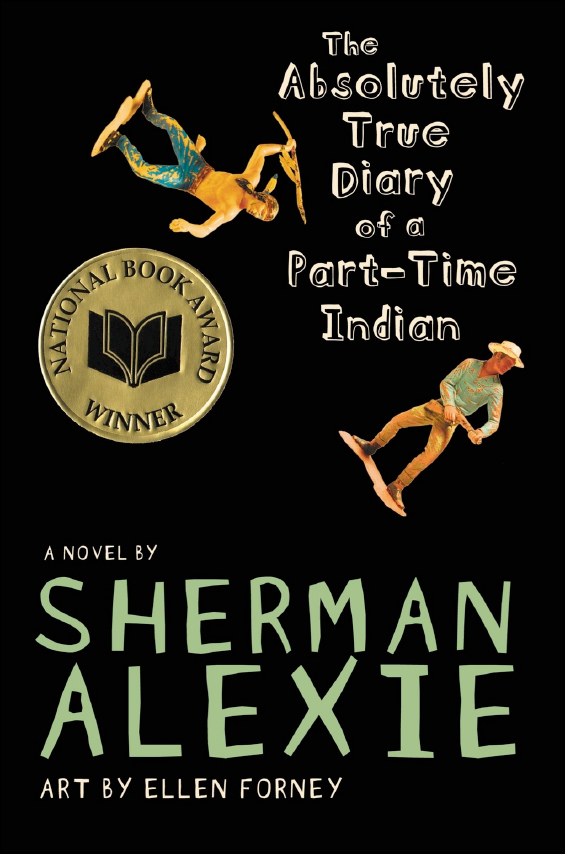
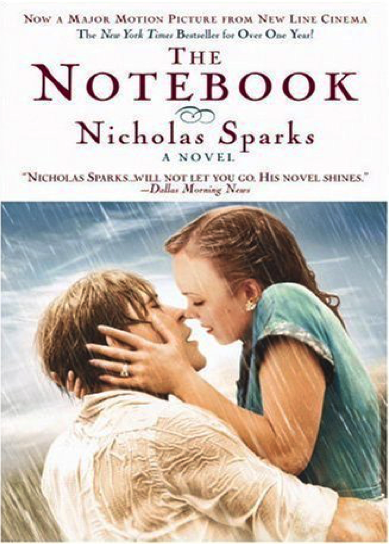

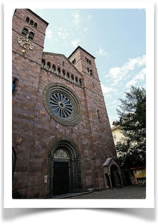
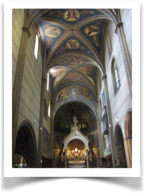

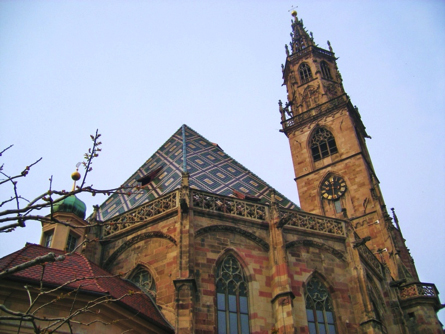 Le fondamenta della chiesa più antica risalgono al IV secolo d.C. e probabilmente era consacrata a
Le fondamenta della chiesa più antica risalgono al IV secolo d.C. e probabilmente era consacrata a 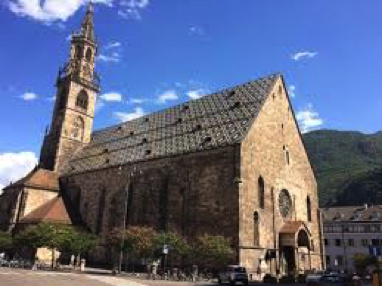
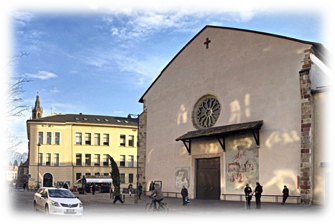
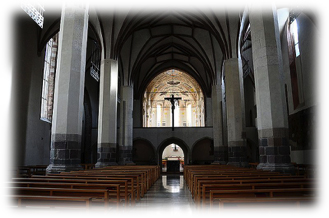
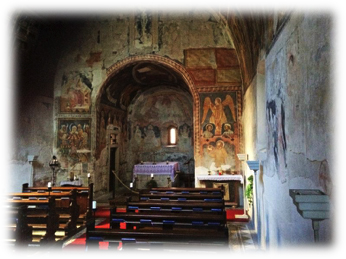 Dal coro della chiesa si arriva nella cappella di San Giovanni, un’aula alta e stretta che custodisce i più importanti affreschi della città, eseguiti da pittori italiani di scuola giottesca.
Dal coro della chiesa si arriva nella cappella di San Giovanni, un’aula alta e stretta che custodisce i più importanti affreschi della città, eseguiti da pittori italiani di scuola giottesca.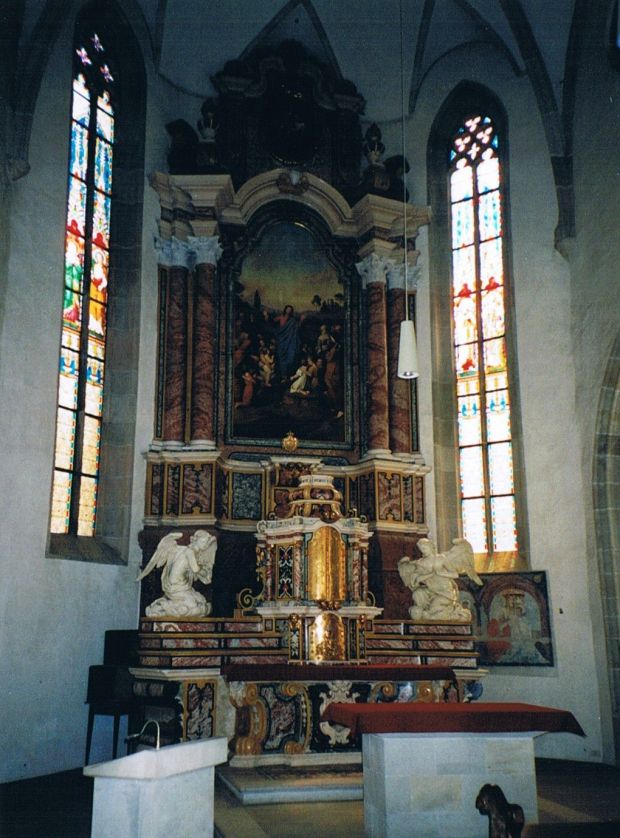 Bisogna fare attenzione a dei piccoli dettagli che ci portano a cogliere a capire una storia. Le figure in grigio, le cosiddette grisarie, sono delle figure che vengono dipinte in grigio perchè con questo grigio si da maggiore risalto al colore che troviamo nell’affresco. Sono quattro e rappresentano i 4 continenti, perchè il quinto non era stato ancora scoperto. Il dettaglio della prospettiva è molto importante e spettacolare che rende il dipinto molto realistico.
Bisogna fare attenzione a dei piccoli dettagli che ci portano a cogliere a capire una storia. Le figure in grigio, le cosiddette grisarie, sono delle figure che vengono dipinte in grigio perchè con questo grigio si da maggiore risalto al colore che troviamo nell’affresco. Sono quattro e rappresentano i 4 continenti, perchè il quinto non era stato ancora scoperto. Il dettaglio della prospettiva è molto importante e spettacolare che rende il dipinto molto realistico.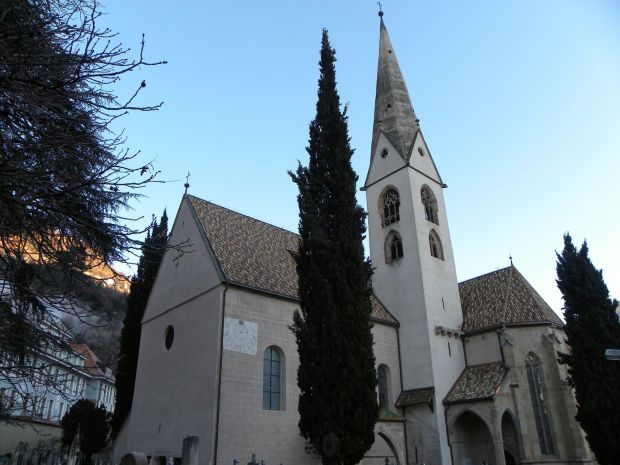 Questo Cristo ha di particolare sostanzialmente 2 cose rispetto a quello che siamo abituati a vedere: il viso che è sereno e non sofferente come quelli del periodo dell’umanesimo e i piedi che sono inchiodati separatamente appoggiati su una specie di piedistallo che dal punto anatomico è molto più verosimile anche questo ci indica che siamo nel periodo precedente all’umanesimo.
Questo Cristo ha di particolare sostanzialmente 2 cose rispetto a quello che siamo abituati a vedere: il viso che è sereno e non sofferente come quelli del periodo dell’umanesimo e i piedi che sono inchiodati separatamente appoggiati su una specie di piedistallo che dal punto anatomico è molto più verosimile anche questo ci indica che siamo nel periodo precedente all’umanesimo.